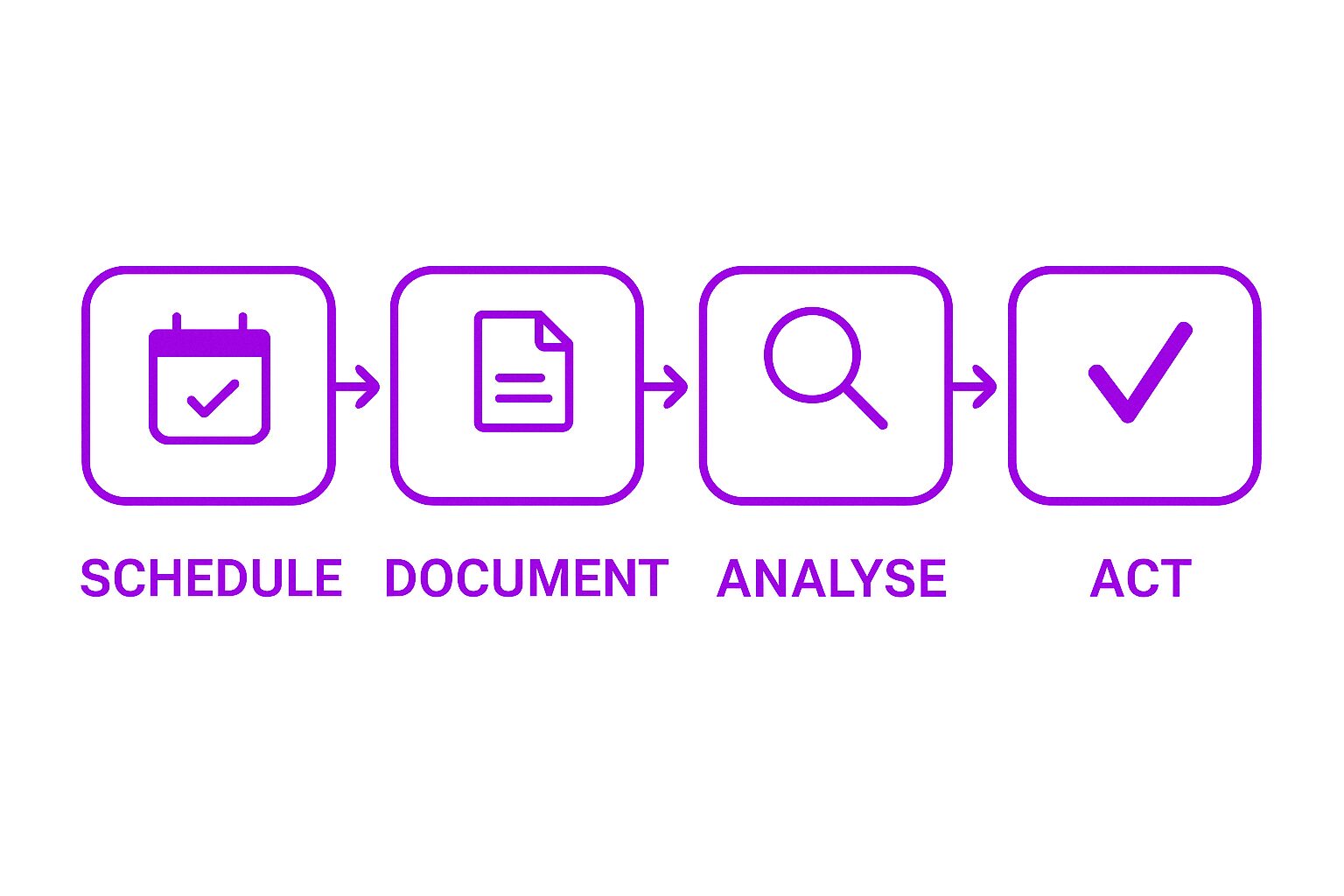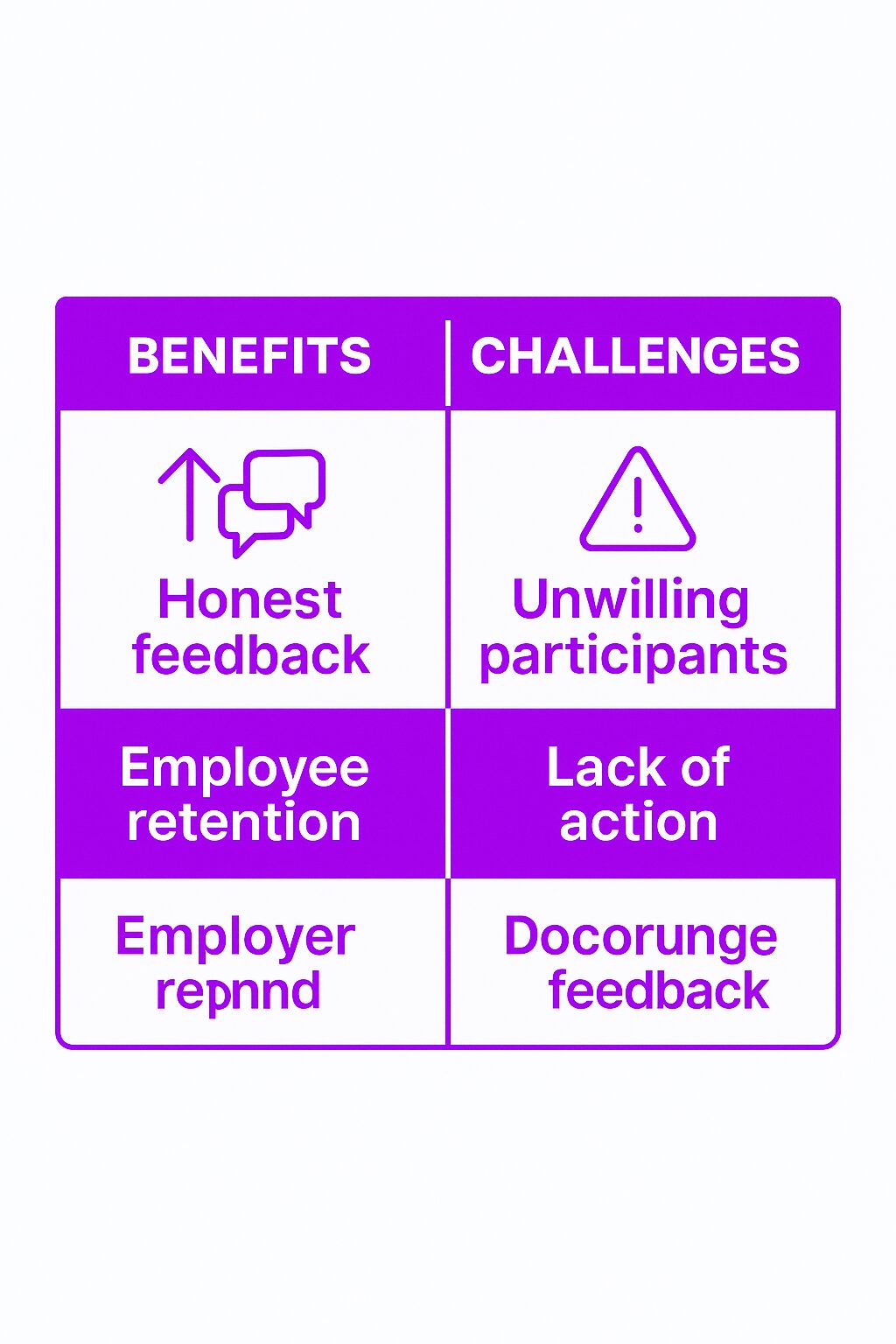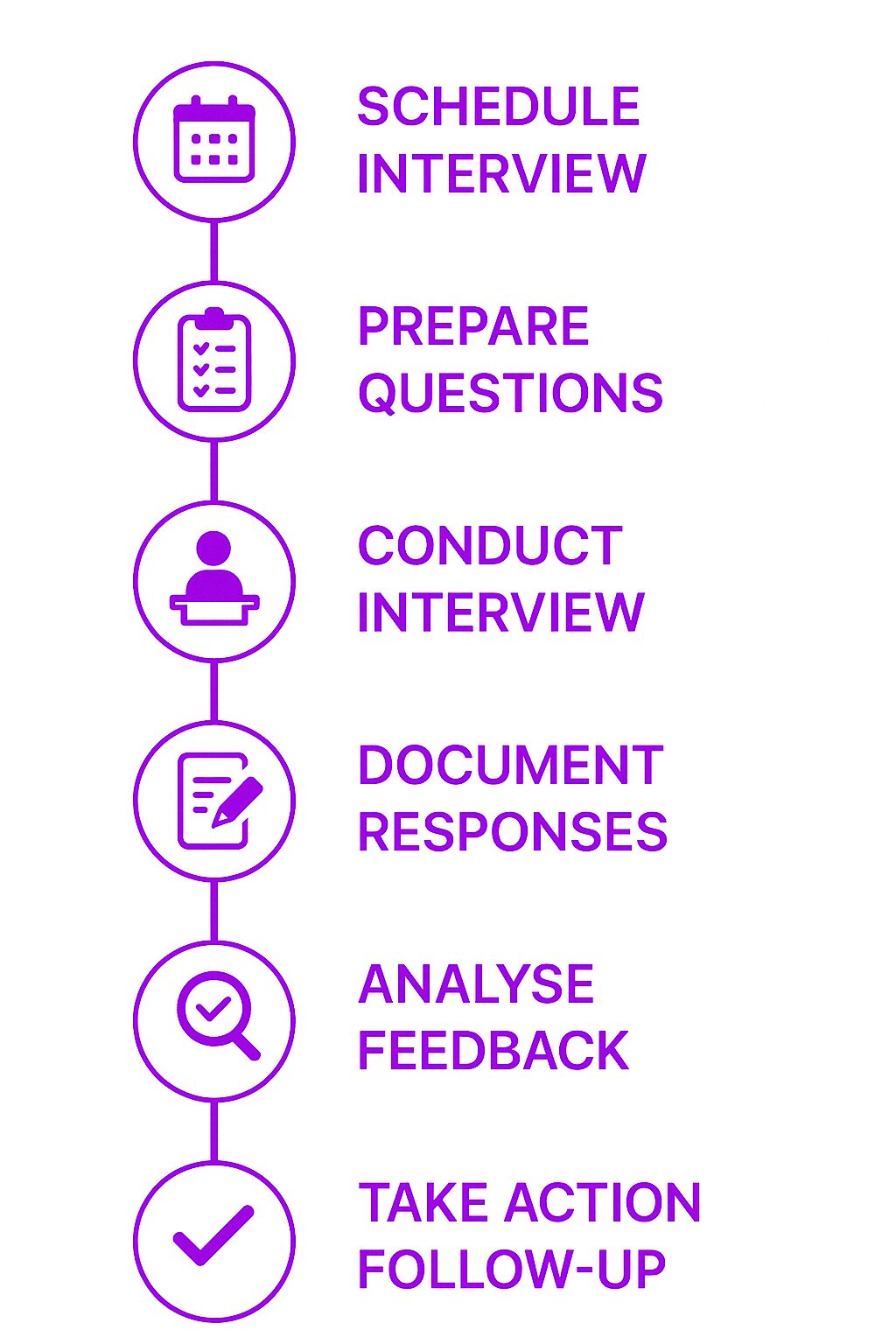What Are Exit Interviews?
Exit interviews are structured conversations between a departing employee and an employer. They provide insight into the employee’s experience, workplace culture, and management effectiveness. Conducted in the final days of employment, these interviews help businesses understand why employees leave and what improvements can be made to retain future talent.
Unlike performance reviews, which focus on current employees, exit interviews capture feedback from individuals who are leaving. This allows for more candid discussions, as employees no longer feel constrained by concerns over promotions or job security.
Why Exit Interviews Matter
Companies use exit interviews to gather insights that can:
-
Identify patterns in employee departures.
-
Improve retention strategies.
-
Strengthen company culture.
-
Address management or policy concerns.
-
Enhance the offboarding experience.
Collecting employee feedback during these interviews is crucial as it provides valuable insights into an employee’s experience and helps improve employee relations.
An effective exit interview process provides unfiltered feedback, helping companies refine their employee experience and reduce turnover.
Key Components of an Exit Interview
Scheduling the Interview
Exit interviews should be scheduled during the employee’s last week. The timing ensures the conversation is fresh while allowing the employee to reflect on their experience.
Selecting the Interviewer
A neutral party, such as an HR representative, should conduct the interview to encourage open and honest communication. Having an HR representative conduct the interview can encourage more honest feedback from departing employees, as it provides a neutral setting for candid conversations concerning employee retention and company improvement.
Structuring the Interview
Effective exit interviews are crucial for obtaining valuable feedback about employee satisfaction and organizational performance.
The best exit interviews follow a structured approach:
-
General experience – What was the employee’s overall experience with the company?
-
Reasons for leaving – What prompted the decision to resign?
-
Managerial feedback – How was the employee’s relationship with their direct supervisor?
-
Workplace culture – Did the employee feel included, supported, and valued?
-
Areas for improvement – What changes would have improved their experience?
-
Future rehire potential – Would the employee consider returning in the future?
Documenting Responses
Responses should be recorded and anonymized where necessary. Patterns and recurring themes should be analyzed to identify broader workplace issues.
Taking Action
Provide constructive feedback should not be collected just for the sake of it. Companies need to act on insights to improve retention, culture, and managerial practices.
Benefits of Exit Interviews
Honest and Unfiltered Feedback
Departing employees are more likely to share constructive criticism without fear of retaliation.
Improved Employee Retention
By identifying the common reasons employees leave, organizations can implement changes to reduce turnover.
Strengthened Employer Brand
A professional, thoughtful offboarding experience leaves a lasting impression. Employees who leave on good terms may refer potential hires or return in the future.
Workplace Culture Improvements
Analyzing exit interview trends can help identify gaps in corporate culture, diversity efforts, or team dynamics.
Managerial Development
Feedback about leadership styles helps companies refine their management training programs.
Challenges of Exit Interviews
Departing Employees’ Reluctance
Some employees hesitate to share negative feedback, fearing it might impact references or professional relationships.
Lack of Action on Feedback
If employees perceive that their input does not lead to change, exit interviews lose credibility.
Emotional Responses
Employees leaving under stressful circumstances may focus on personal grievances rather than providing constructive feedback.
Interviewer Bias
If conducted by a direct manager, employees may feel pressured to give positive responses rather than honest feedback.
Best Practices for Conducting Exit Interviews
Choose the Right Format
Face-to-face interviews allow for deeper discussions, while anonymous surveys may yield more honest feedback.
Ensure Confidentiality
Employees should feel confident that their feedback will not impact future job prospects or references.
Ask Open-Ended Exit Interview Questions
Encouraging employees to elaborate provides more valuable insights. Key questions include:
-
What prompted your decision to leave?
-
How would you describe the company culture?
-
What could have been done to improve your experience?
-
Would you consider returning in the future?
Analyze Feedback for Trends
Individual responses matter, but the real value of exit interviews comes from identifying recurring themes.
Take Action
Communicate findings to leadership, implement necessary changes, and track improvements over time.
Essential Exit Interview Questions
Conducting an effective exit interview requires asking the right questions to gather valuable insights from departing employees. Here are some essential exit interview questions to consider:
-
What motivated you to leave the company?
-
Understanding the primary reasons behind an employee’s departure can help identify systemic issues and areas for improvement.
-
What did you like or dislike about your job?
-
This question provides a balanced view of the employee’s experience, highlighting both positive aspects and areas that may need attention.
-
How did you feel about your supervisor or manager?
-
Feedback on managerial relationships can reveal strengths and weaknesses in leadership styles and help improve management training programs.
-
What suggestions do you have for improving the company?
-
Departing employees often have valuable insights into potential improvements that current employees might hesitate to share.
-
What would you change if you were in a leadership position?
-
This question encourages employees to think critically about organizational policies and practices from a leadership perspective.
-
How did you find the company culture and work environment?
-
Insights into company culture can help identify whether employees feel included, supported, and valued.
-
Were there any challenges or obstacles that you faced during your time here?
-
Identifying specific challenges can help address issues that may be affecting employee morale and productivity.
-
How did you feel about your compensation and benefits package?
-
Feedback on compensation and benefits can highlight whether these aspects are competitive and fair.
-
Were there any opportunities for growth or professional development that you felt were lacking?
-
Understanding gaps in professional development opportunities can help improve career progression paths within the company.
-
Is there anything that we could have done to retain you?
-
This question can provide direct insights into what might have prevented the employee from leaving, offering actionable retention strategies.
Remember to tailor your questions to the specific needs and goals of your organization, and to ensure that they are open-ended and encourage honest feedback.
Common Mistakes to Avoid
While exit interviews can be a valuable tool for gathering insights and improving employee retention, there are several common mistakes to avoid:
-
Not conducting exit interviews at all:
-
Skipping exit interviews means missing out on valuable feedback and insights from departing employees.
-
Not asking the right questions:
-
Asking irrelevant or insufficient questions can limit the usefulness of the exit interview. Ensure questions are well-thought-out and relevant.
-
Not taking action on feedback:
-
Failing to act on the feedback gathered can lead to a lack of trust and credibility among employees, undermining the purpose of exit interviews.
-
Not maintaining confidentiality:
-
If employees do not trust that their feedback will remain confidential, they may be less likely to provide honest and constructive feedback.
-
Not involving HR:
-
Excluding HR from the exit interview process can result in a lack of consistency and standardization, reducing the effectiveness of the interviews.
-
Not documenting the interview:
-
Failing to document the exit interview can lead to a lack of accountability and follow-up, making it difficult to track and act on feedback.
-
Not analyzing the data:
-
Without analyzing the data gathered from exit interviews, organizations miss out on identifying trends and actionable recommendations.
By avoiding these common mistakes, you can ensure that your exit interview process is effective and provides valuable insights for improving employee retention and satisfaction.
Creating an Offboarding Checklist
Creating an offboarding checklist can help ensure that the exit interview process is smooth and efficient, and that all necessary steps are taken to gather feedback and insights from departing employees. Here are some items to include on your offboarding checklist:
-
Schedule the exit interview:
-
Schedule the exit interview with the departing employee and ensure that it is conducted in a timely manner, ideally during their last week.
-
Prepare the interview questions:
-
Prepare the exit interview questions in advance, tailoring them to the specific needs and goals of your organization to ensure they elicit valuable feedback.
-
Conduct the interview:
-
Conduct the exit interview in a confidential and respectful manner, encouraging open and honest communication.
-
Document the interview:
-
Accurately document the exit interview, recording all feedback and insights to ensure they can be analyzed and acted upon.
-
Analyze the data:
-
Analyze the data gathered from the exit interview to identify any trends or patterns that may indicate broader workplace issues.
-
Take action on feedback:
-
Act on the feedback and insights gathered from the exit interview, implementing necessary changes to improve employee retention and satisfaction.
-
Follow up with the employee:
-
Follow up with the departing employee to address their concerns and thank them for their feedback, reinforcing a positive offboarding experience.
By creating an offboarding checklist, you can ensure that the exit interview process is smooth and efficient, and that all necessary steps are taken to gather feedback and insights from departing employees.
Related Concepts
Employee Retention
Exit interviews play a key role in retention by identifying and addressing workplace issues that lead to employee departures.
Workplace Culture
A company’s culture influences job satisfaction, engagement, and retention. Exit interviews help organizations refine their cultural approach. Analyzing these interviews can significantly enhance employee relations and improve the overall workplace environment.
Employee Experience Strategy
A strong employee experience leads to higher satisfaction and lower turnover. Exit interviews provide valuable data to refine employee experience strategies.
Real-World Examples
Tech Company Reduces Turnover Through Exit Interview Insights
A software company struggling with high turnover conducted exit interviews and found that employees cited burnout as the primary reason for leaving. In response, the company implemented flexible work schedules, reducing voluntary turnover by 20%.
Retail Chain Improves Management Training
A national retailer discovered through exit interviews that many employees felt unappreciated by store managers. The company introduced leadership training, resulting in a measurable increase in employee satisfaction.
Financial Firm Enhances Onboarding Based on Feedback
A financial services company noted that new hires often felt overwhelmed during onboarding. After reviewing exit interview data, the company revamped its training programs, leading to higher retention among new employees.
Exit interviews provide a unique opportunity for companies to learn from departing employees. By gathering candid feedback and acting on insights, organizations can improve employee retention, workplace culture, and overall job satisfaction.







